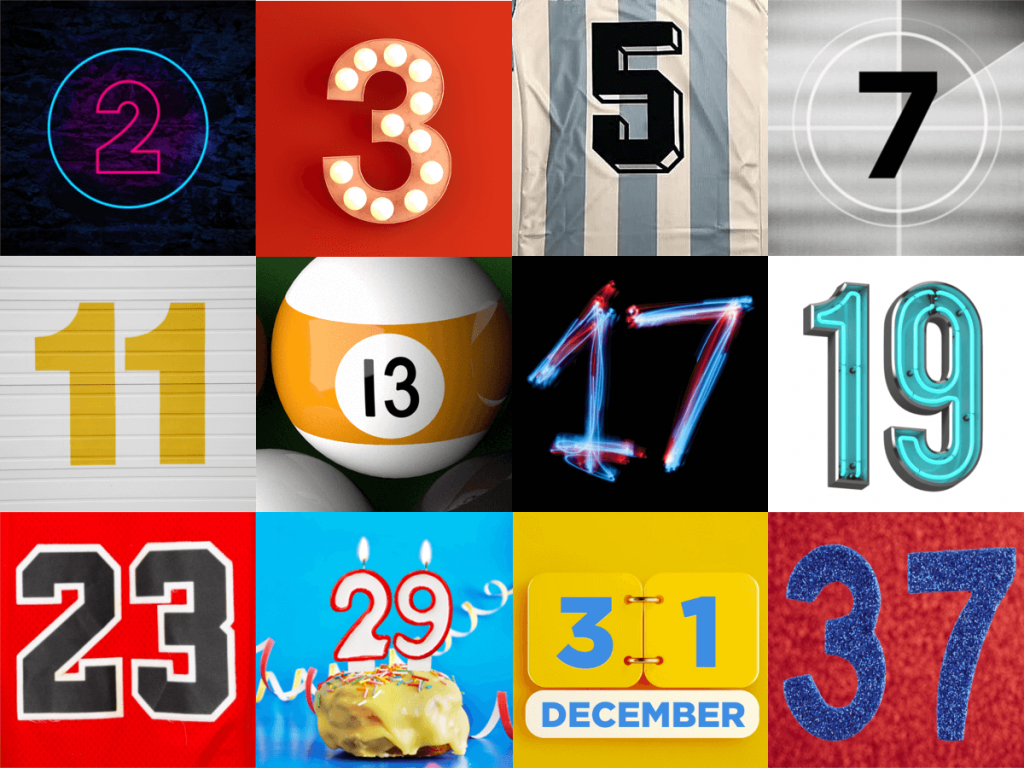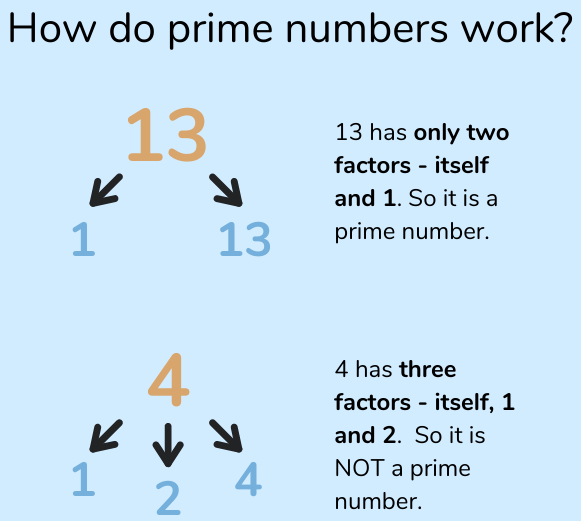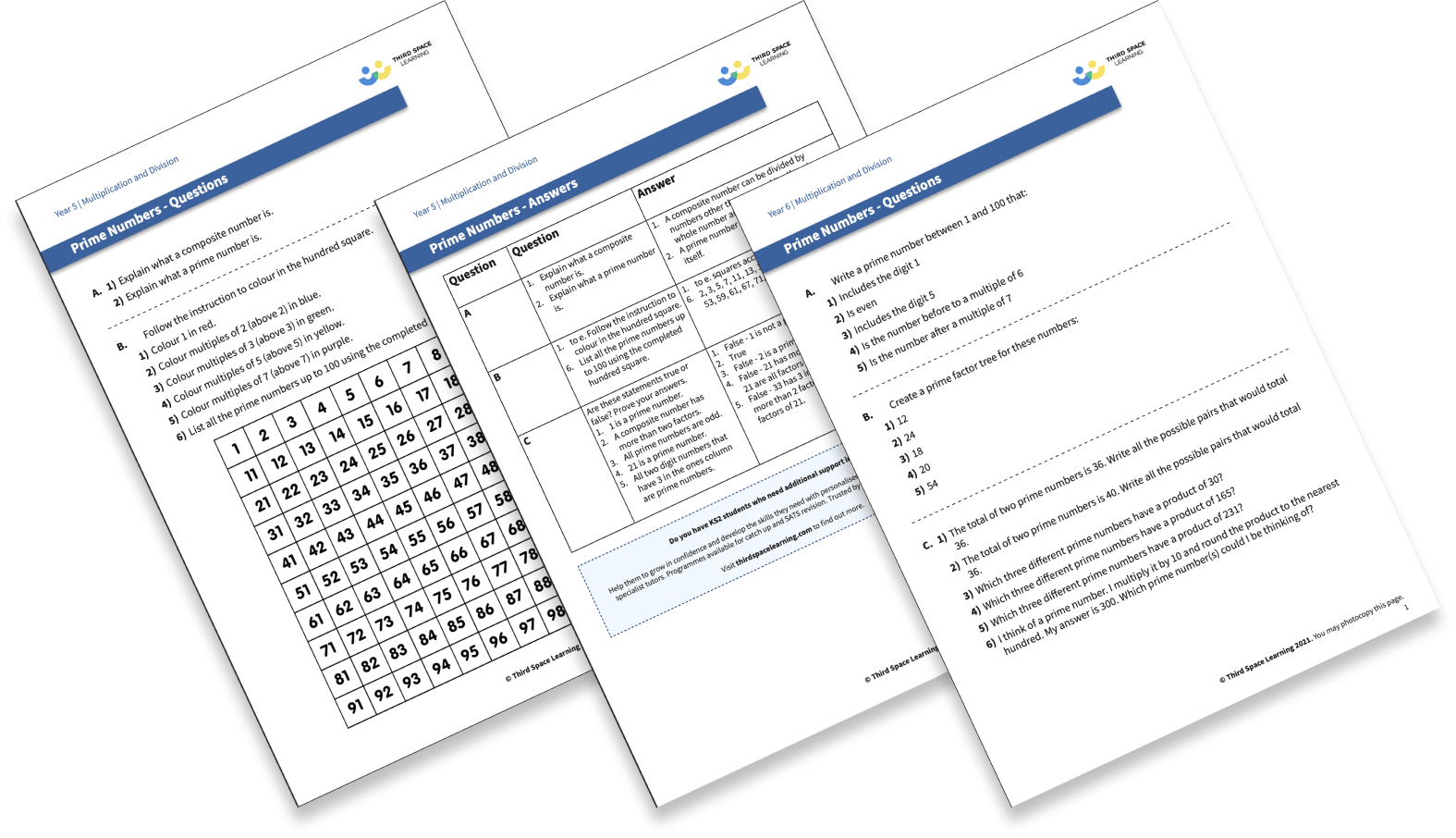
What Is A Prime Number?
What is a prime number?
A prime number is a number greater than 1 with only two factors – themselves and 1.
A prime number cannot be divided by any other numbers without leaving a remainder.
An example of a prime number is 13. It can only be divided by 1 and 13. Dividing a prime number by another number results in numbers left over e.g. 13 ÷ 6 = 2 remainder 1.
15 is not an example of a prime number because it can be divided by 5 and 3 as well as by itself and 1.
15 is an example of a composite number because it has more than two factors.
Prime number examples
How to work out if a number is a prime number or not.

What are the prime numbers?
There are 8 prime numbers under 20: 2, 3, 5, 7, 11, 13, 17 and 19.
The first 10 prime numbers are 2, 3, 5, 7, 11, 13, 17, 19, 23, 29.
There are 25 prime numbers between 1 and 100.
Prime numbers can continue well past 100. For example, 21,577 is a prime number.
List of prime numbers to 100
2, 3, 5, 7, 11, 13, 17, 19, 23, 29, 31, 37, 41, 43, 47, 53, 59, 61, 67, 71, 73, 79, 83, 89, 97.
Smallest prime number
2 is the smallest prime number. It also the only even prime number – all other even numbers can be divided by themselves, 1 and 2 at least, meaning they will have at least 3 factors.
Largest prime number
One of the most famous mathematicians of the classical era, Euclid, recorded a proof that there is no largest prime number. However many scientists and mathematicians are still searching to find it as part of the Great Internet Mersenne Prime Search.
The largest known prime number (as of November 2020) is 282,589,933 − 1, a number which has 24,862,048 digits when written in base 10. Before then the largest known prime number was 277,232,917-1, having 23,249,425 digits.
By the time you read this it may be even larger, but you can follow its progress on Wikipedia.
Common FAQs about prime numbers
1 is not a prime number because it has only one factor, namely 1. Prime numbers need to have exactly two factors
2 is a prime number because it has exactly two factors – itself and 1.
51 is not a prime number because it can be divided by 3 and 17, as well as by itself and 1. ie it has four factors.

Prime Numbers Worksheets
FREE worksheets containing 29 prime numbers questions and answers for Year 5 and Year 6
Prime numbers in primary school
Prime numbers are not introduced in the UK until Year 5.
According to the National Curriculum, Year 5 children should be taught to
“know and use the vocabulary of prime numbers, prime factors and composite (non-prime) numbers to establish whether a number up to 100 is prime and recall prime numbers up to 19.”
In Year 6, children should be able to “identify common factors, common multiples and prime numbers”.
How are prime numbers used in the real world?
One of the most important uses for prime numbers is in cyber security – making information shared over the internet safer.
In order to encrypt (make secure) things like credit card details, medical records, even some messaging services like WhatsApp, software engineers make algorithms using prime numbers.
By multiplying two very large prime numbers together (some companies use prime numbers that are hundreds of digits long!), we create an even larger number whose original factors (the two very large prime numbers) are only known to us. We then use this even larger number to encrypt our information.
If anyone else wants to discover what information we are sending, they have to find out what our original factors were. With prime numbers as long as the ones we have used, it could take them years or even decades of constant trial and error before they find even one. This ensures our information is kept safe.
Wondering about how to explain other key maths vocabulary to your children? Check out our Primary Maths Dictionary, or try these primary maths terms:
- What Is A Cube Number: Explained For Primary Parents and Kids
- What Is The Lowest Common Multiple: Explained For Primary Parents And Kids
- What Is The Highest Common Factor: Explained For Primary Parents And Kids
Prime number questions
1) A square number and a prime number have a total of 22. What are the two numbers?
A: 9 and 13
2) Emma thinks of two prime numbers. She adds the two numbers together. Her answer is 36. Write all the possible pairs of prime numbers Emma could be thinking of.
A: 3 and 33; 5 and 31; 7 and 29; 13 and 23; 17 and 19
3) Circle the two prime numbers – 29, 59, 39, 69, 29
A: 29 and 59
4) Write the three prime numbers which multiply to make 231.
A: 3 x 7 x 11
CHALLENGE QUESTION: Chen chooses a prime number. He multiplies it by 10 and then rounds it to the nearest hundred. His answer is 400. Write all the possible prime numbers Chen could have chosen.
A: 37, 41 or 43.
Source : What Is A Prime Number? Explained for Parents, Teachers and Children (thirdspacelearning.com)